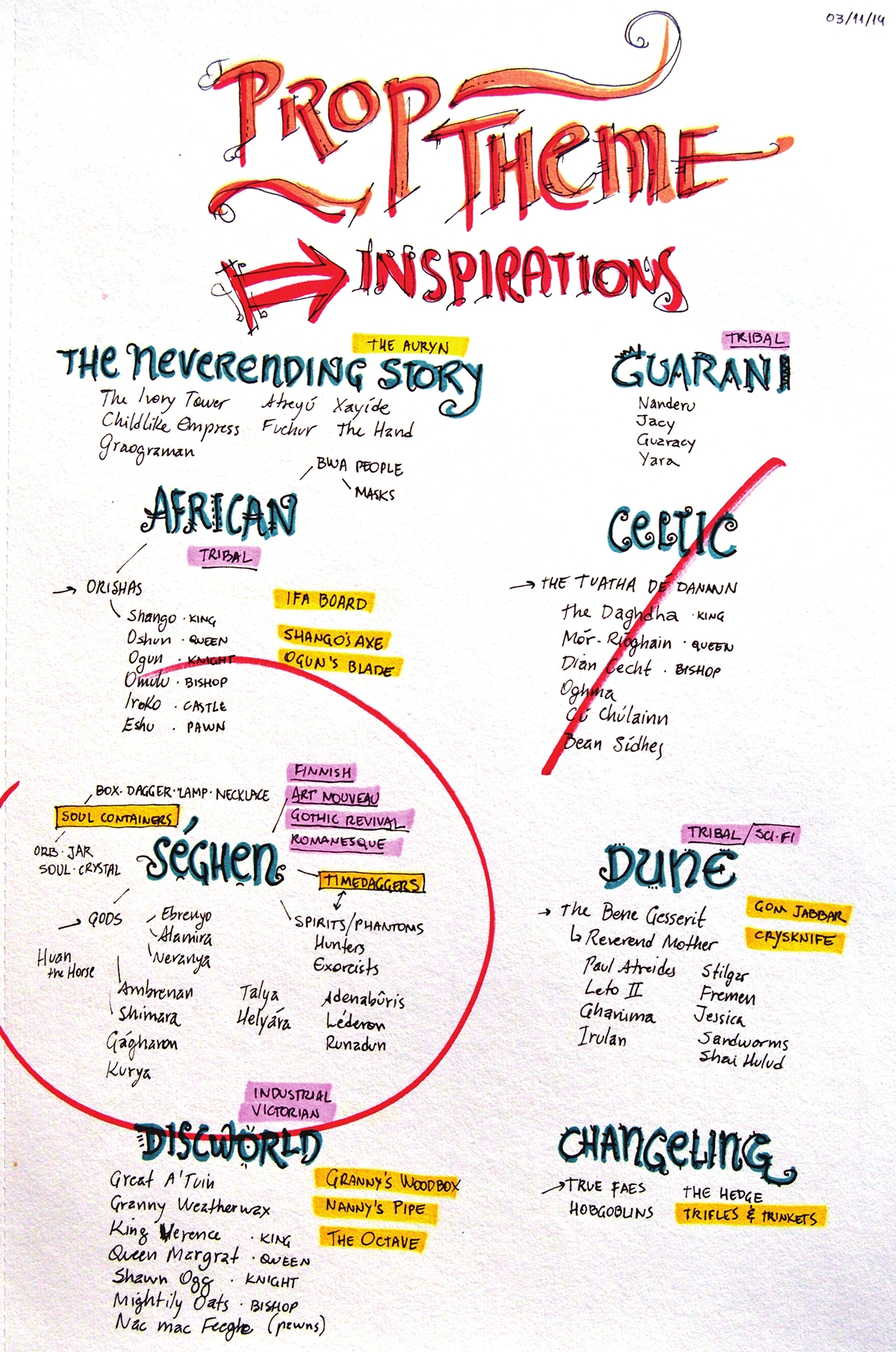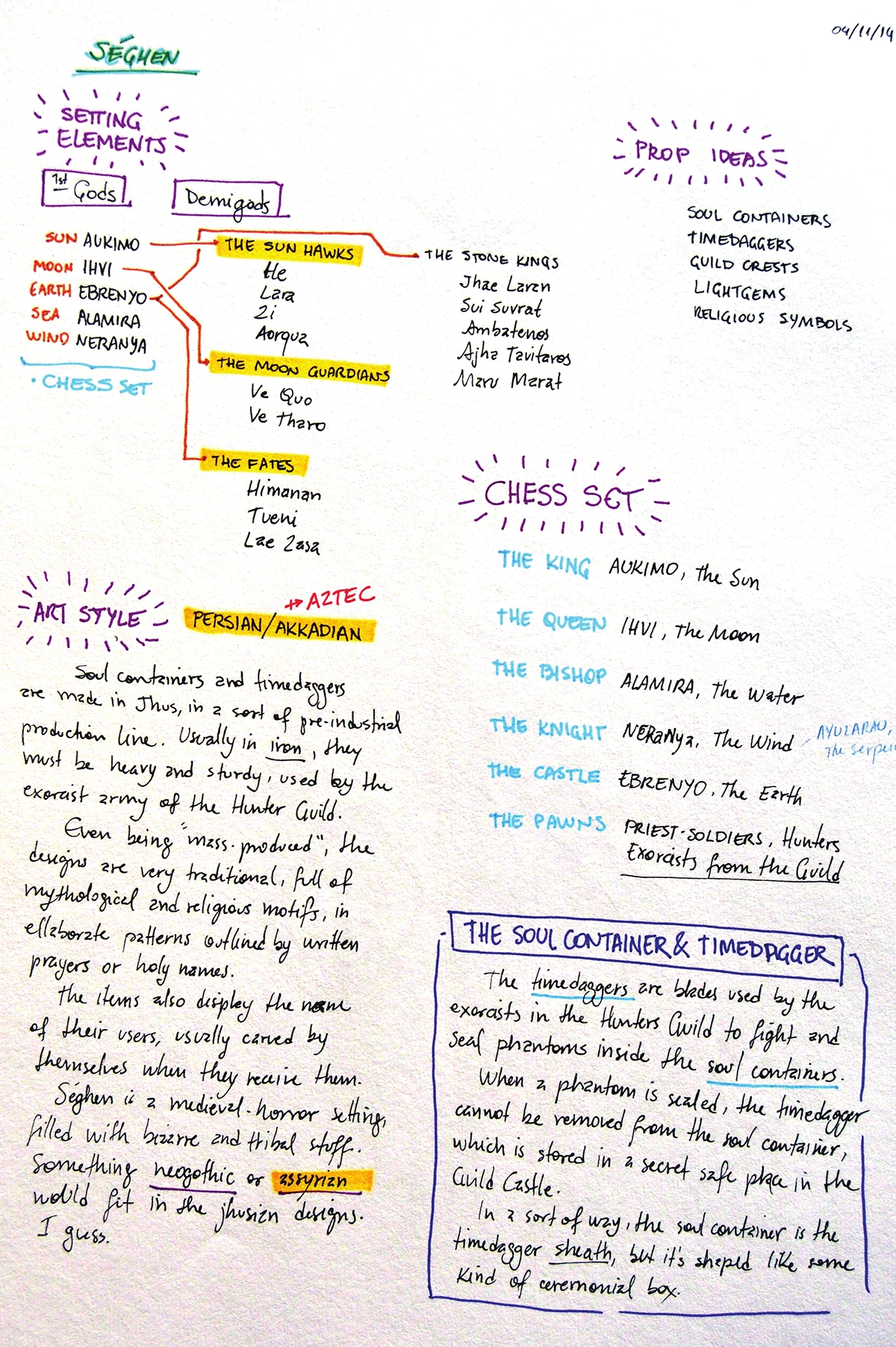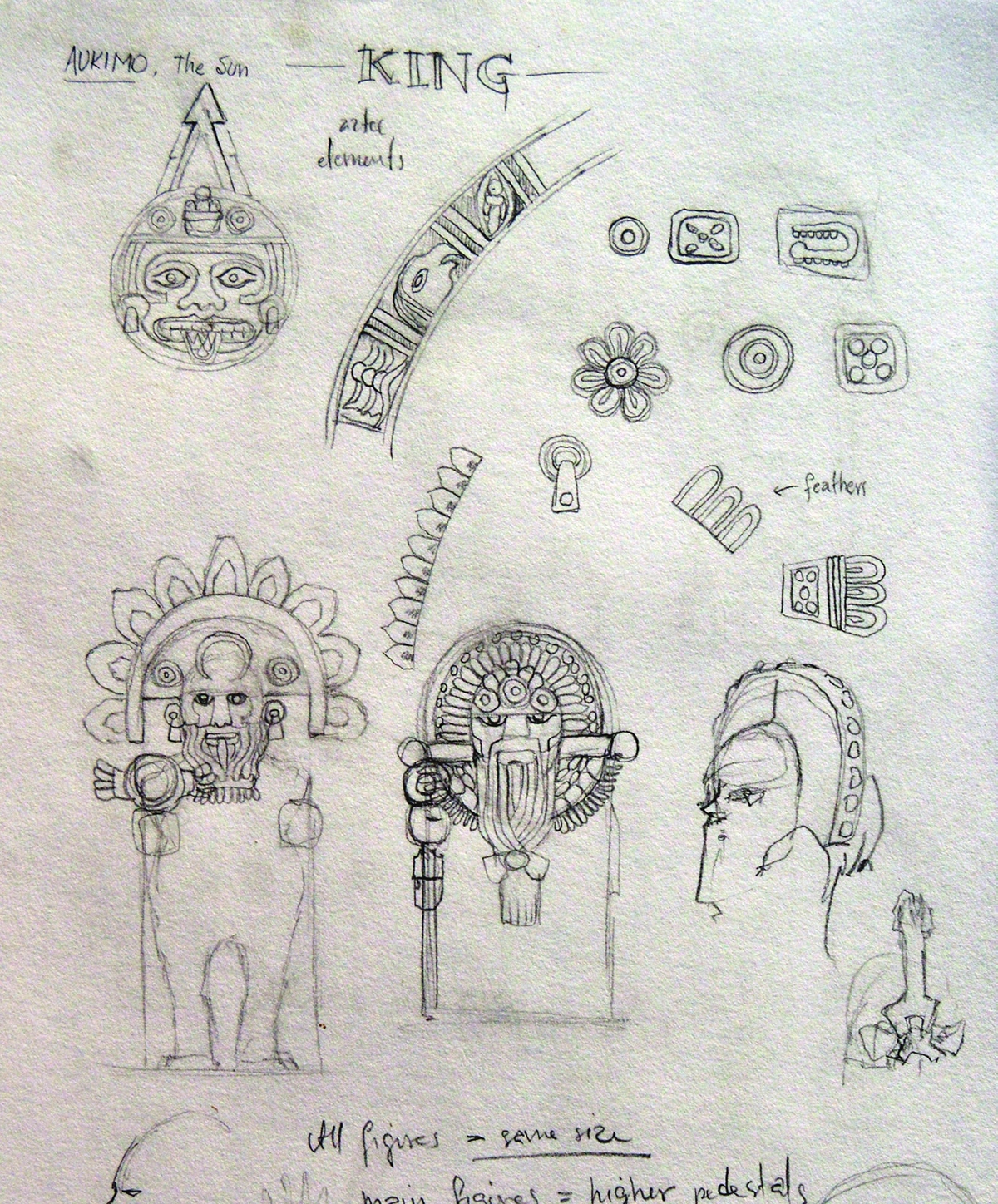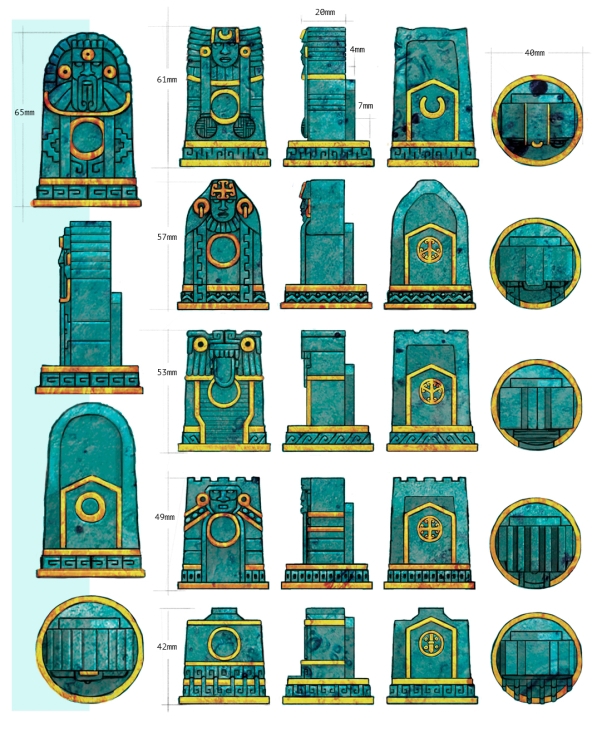


This project was developed as a requirement for the Film, Props and Art Direction module in the Model Making, Design and Digital Effects course at IADT Dún Laoghaire, Ireland. The deliverables included a chess set and a hand prop, both based on any existent art style, intended to be used in a movie set.

I thought of many different things that I like, always keeping in mind that I’d have to make chess pieces based on them. My main sources of inspiration are books that I’ve read and love, tabletop RPGs and world folklore. I’m very fond of Celtic and African themes – the first because I read about the Celts since I was a child, the second because African culture is one of the main building blocks of Brazilian society and, in the last few years, I grew fascinated by its religious and spiritual aspects. However, I think I would not be able to express myself in those areas as I’d like to, so instead of going down that road, I decided to continue with something that I always wanted to do: Séghen, a fictional world that I’m creating with a friend for almost 10 years.
Even with all the main ideas of Séghen in my mind, I still don’t know exactly what would be the different art styles of its civilizations. So, instead of developing one from scratch, I started to think what I’d like to see. I like ancient-looking things with lots of detailed work, so when deciding for an art style, I chose the Aztec theme. It’s important to notice that I’ve used the Aztec style just as that:a style. All the background story, symbols and elements represented in the chess and the prop comes from Séghen.
Even with all the main ideas of Séghen in my mind, I still don’t know exactly what would be the different art styles of its civilizations. So, instead of developing one from scratch, I started to think what I’d like to see. I like ancient-looking things with lots of detailed work, so when deciding for an art style, I chose the Aztec theme. It’s important to notice that I’ve used the Aztec style just as that:a style. All the background story, symbols and elements represented in the chess and the prop comes from Séghen.
The project name, Ka Lenténpera, is an expression in Harian, one of the main languages of Séghen, and means literally “the tools of termination”, referring to the power against evil within the objects.


Religion and spirituality are two fundamental elements of Séghen, so they were used as the sources of inspiration for the chess set and the prop. First, the Enneka Pantheon was used to give birth to the chess pieces: each one of the back figures (King, Queen, Bishop, Knight and Rook) are representations of different gods. Actually, my fist idea was that the chess pieces could also be used as little sculptures of the gods, as amulets within the world story. I’ve created several symbols and attributes for each god, but long story short they would be: Aukimo the Sun (King), Ihvi the Moon (Queen), Alamira the Seawater (Bishop), Neranya the Windserpent (Knight) and Ebrenyo the Earthwarrior (Rook). The Pawn is an abstract figure representing the Hunter’s Guild.
The prop is also one of the main elements of Séghen: a dagger, here called “Dagger of Closure”. Within the story of Séghen, there was an invasion of otherworldly ghosts that have the power to possess and control objects, people, land or anything. It is extremely difficult to destroy one of these ghosts, but someone discovered a way of sealing them – using the Dagger of Closure, an enchanted weapon that can imprison the evil spirit inside itself. The prop that I’ve planned would be the very fist dagger of its kind, and after that it would be manufactured in large scale by the Hunter’s Guild – one of the main protectors of humankind in these dark days.

I started with original drawings of the gods, to turn them into something Aztec afterwards. Then, based on the first Aztec versions, I tried to simplify and stylize the shapes until something that would be easier to cast in resin without much trouble.
Following the Aztec style, the chess would simulate turquoise gem with gold enamel. The Dagger handle would have the same finish, and the blade would be obsidian.












The original concept for the Dagger of Closure included a sheath-box, a device where the dagger, after imprisoning a ghost, would rest forever. Due to time and material restrictions, the box wasn’t made. At that time the prop was still called Timedagger. Actually, I have still not decided the name of this weapon, even it being one of the central elements of the story I’ve created.
As the sculpting was in the go, some aspects of the final design changed a bit, in order to adapt to an easier casting afterwards.


Initially planned as sculptures made entirely of plasteline, later they were changed to an easier way of sculpting. The chess pieces designs were printed and pasted on a sikablock slab, then cut to a basic outline, which was afterwards completed with plasteline. Instead of sculpting every detail by hand, I used an extruder, which was very helpful, since it made almost the exact size of lines and bands that I needed.
The bases of the chess pieces, initially all different, were changed to a common design, which was cast first. Then all pieces were assembled on top of their bases. On the back of each piece there’s a crest representing the symbol of each element. That was made on a piece of foamboard, drawn with mechanical pencil in a way that the silicon would fill the lines afterwards.


The dagger has an internal armature of plywood, and the insert between the blade and the handle is made of foamboard. I’ve used the extruder to make the handle lines, as well, and a scalpel to chip the plasteline from the blade, to look as chipped stone.


Except for the handle, all of the pieces were cast in a single block mould. The handle was made in a two-part mould because of the blade fitting underneath. The finish, to simulate turquoise, was made in different steps. First, all the pieces received a coat of gray primer. Then, on top of that, a coat of brown, orange, yellow and dark green acrylics, applied with a sponge. After that, a coat of fixative to hold the texture, then a coat of blue, green and yellow. Later on, the top layer was scratched to reveal the texture underneath, in some parts. A satin varnish was the last coat, however, maybe the turquoise texture would look better with a glossy finish, instead of satin. The blade received two coats of black acrylic paint and a coat of satin varnish.
The gilding was made using “liquid metal” classic gold acrylic paint.
There are several parts missing in the pieces. Some of them broke, some of them were caused by air bubbles in the casting. While fixing some of them, I kept the majority of the mistakes, because in some way they gave the pieces the aspect of something ancient.











